You’d never guess… Or would you? Beneath those lush leaves and vibrant blooms lurk plants that are straight-up banned in parts of the U.S.
These botanical bad boys might steal the show, but they’re stealing habitat too. From aggressive invaders to toxic showstoppers, here are 25 plants that look innocent but could land you in a legal tangle.
1. Kudzu
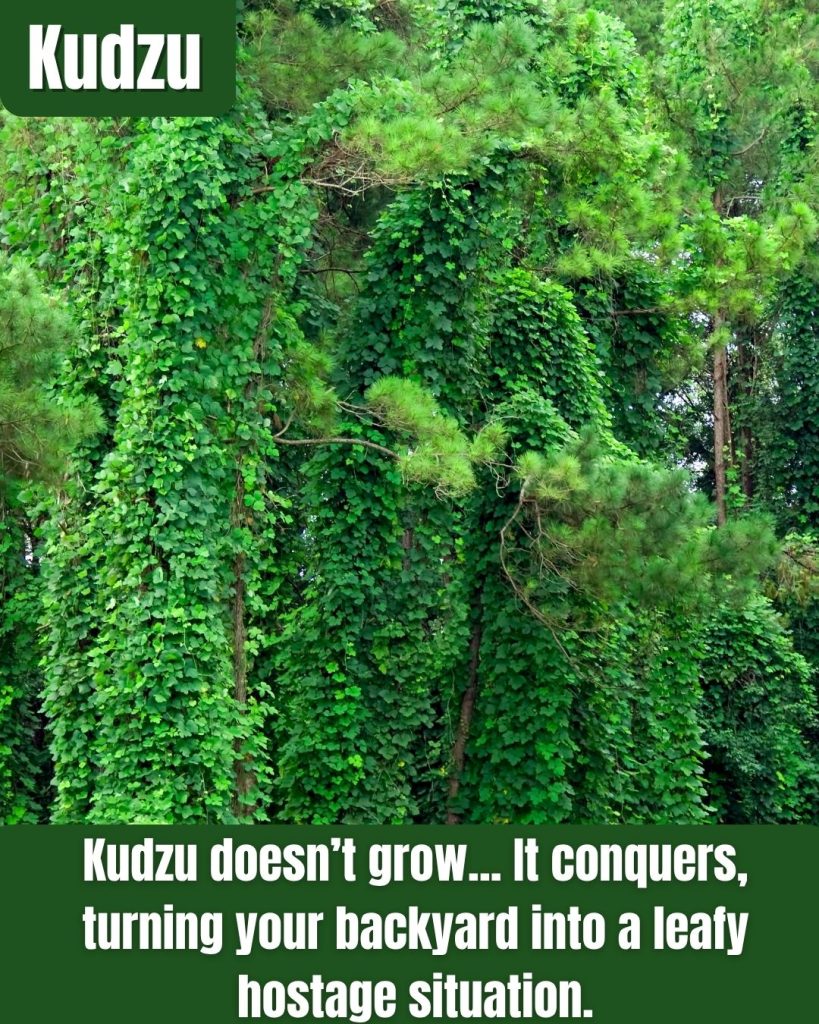
- Imported from Asia in the 1800s, it was once promoted by the U.S. government to fight erosion.
- Can grow over a foot a day, quickly swallowing trees, homes, and anything else in its path.
- Nicknamed “the vine that ate the South” because of how fast and aggressively it spreads.
Kudzu is one of the most infamous invasive plants in the U.S. It was originally brought over with good intentions, but its rapid growth and smothering tendencies quickly turned it into a menace.
This fast-growing vine climbs anything in its way, forming thick blankets that block sunlight and suffocate native vegetation.
Throughout the South, it’s earned a fearsome reputation. Its ability to overtake entire landscapes has led several states to outlaw its cultivation.
If you ever spot it creeping in, don’t wait. Cut it back before it takes over.
2. Japanese Knotweed
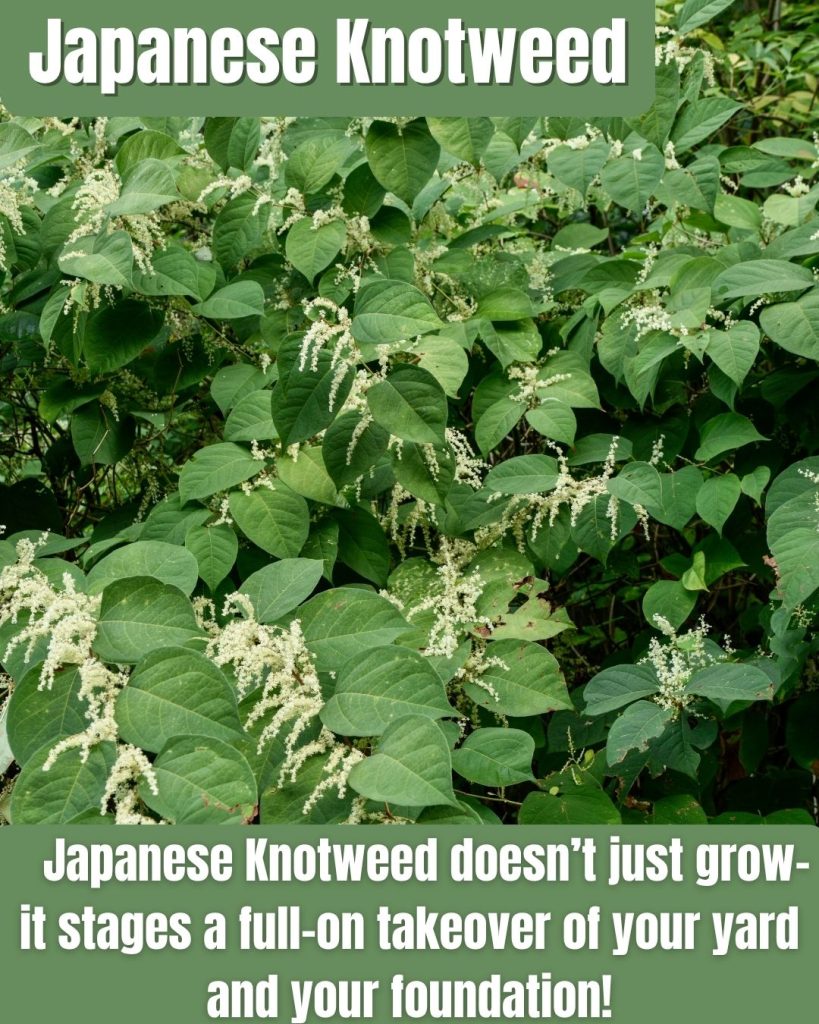
- Introduced from Asia in the late 1800s as an ornamental plant and erosion control, it soon began to spread like wildfire.
- Grows fast and furious, with stems reaching 10 feet tall in a single season and its rhizomes pushing through concrete and asphalt.
- Known for its destructive nature, it invades yards, gardens, and even disrupts building foundations.
Japanese Knotweed is a relentless invader. Brought to the U.S. as a decorative plant, it quickly outgrew its welcome, thanks to its aggressive spreading habits.
With the ability to grow up to 10 feet tall and send roots deep into the ground, it can crack sidewalks, invade foundations, and choke out native plants.
Its rapid growth and damaging roots make it a nightmare for homeowners and landscapers alike. States have banned it to try and halt its destructive march across the country.
3. Giant Hogweed (Federally banned)
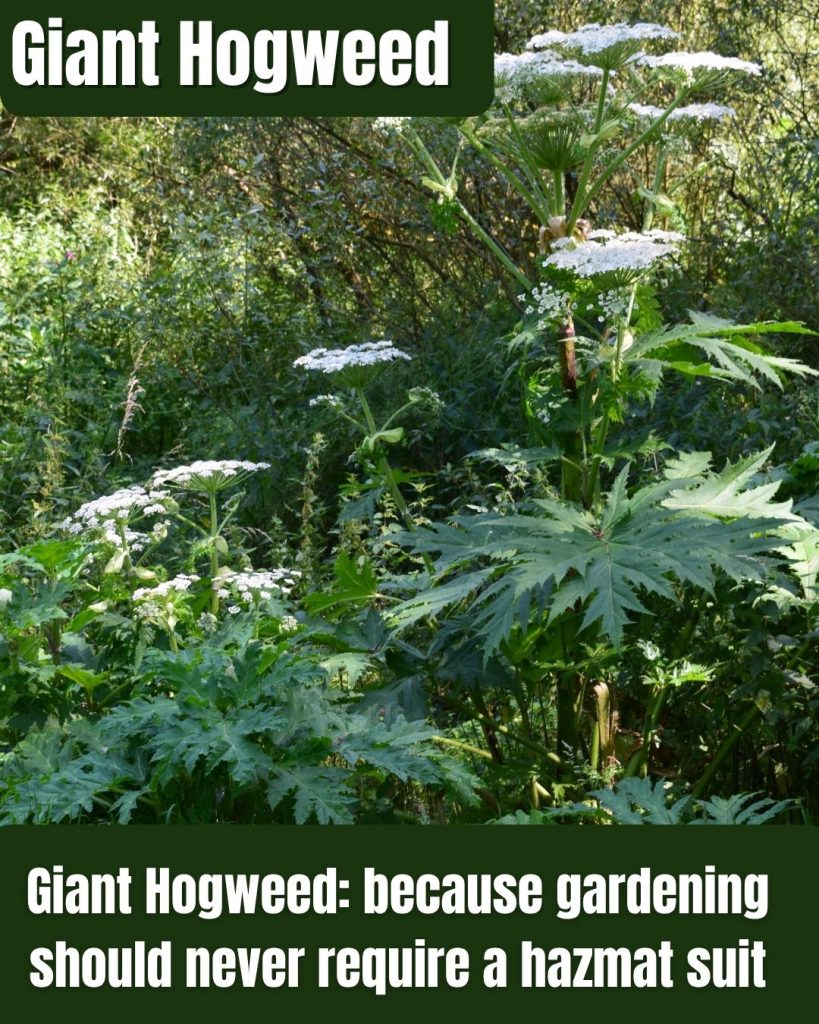
- Native to the Caucasus, it was brought to the U.S. in the early 1900s as a garden curiosity.
- Its sap is phototoxic, causing burns, blisters, and even blindness when exposed to sunlight.
- Can reach 15 feet tall, towering over gardens and spreading by the tens of thousands of seeds.
Giant Hogweed might look like a botanical showstopper, but it comes with a terrifying secret: its sap reacts with sunlight and can cause serious skin injuries.
This towering plant spreads aggressively, with each one producing up to 100,000 seeds that hitch rides on wind and water.
It’s so dangerous, it’s banned at the federal level. If you see something that looks like Queen Anne’s lace on steroids, don’t touch…Report it and steer clear.
4. Tree of Heaven
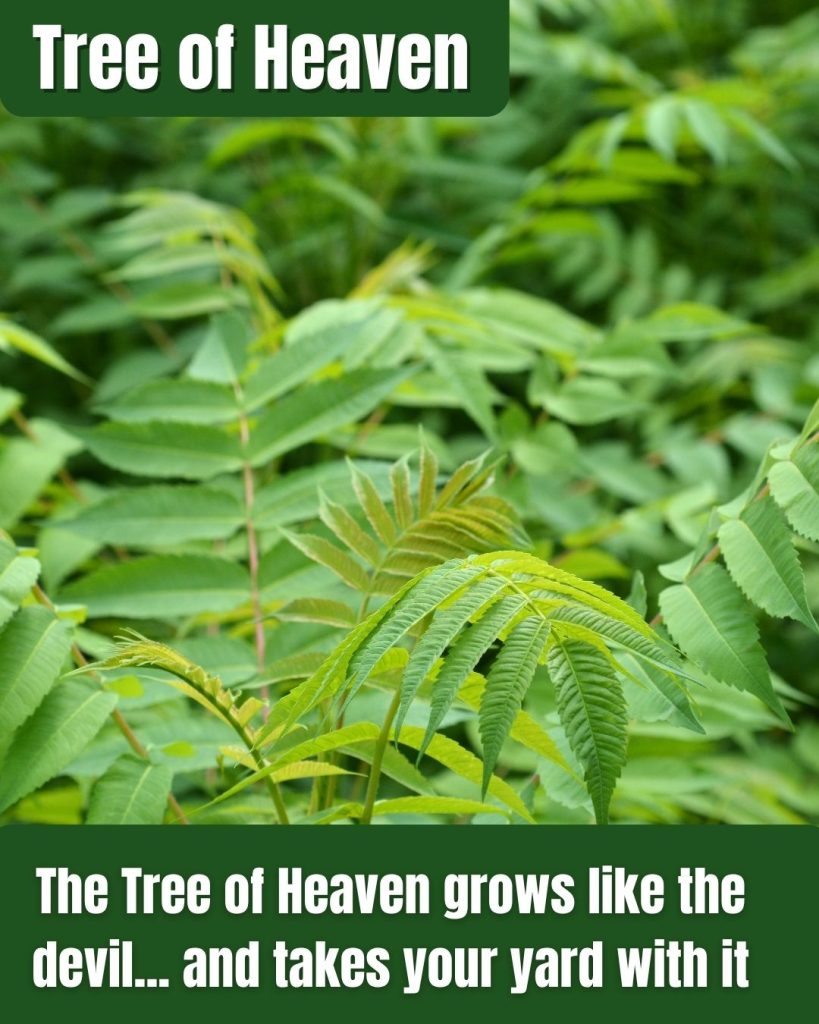
- Brought from China in the 1700s as a shade tree for cities… It’s now an invasive menace.
- Spreads like wildfire, using both seeds and underground suckers to colonize huge areas fast.
- Releases chemicals into the soil that suppress other plants, giving it an unfair advantage.
Don’t let the name fool you, this tree is pure trouble. The Tree of Heaven shoots up fast, wrecks sidewalks, and crowds out everything in its path.
Worse yet, it attracts the dreaded spotted lanternfly, a serious threat to crops and forests.
It’s banned in several states, and for good reason. If it starts growing on your property, get ready for a long, stubborn fight.
5. Lantana
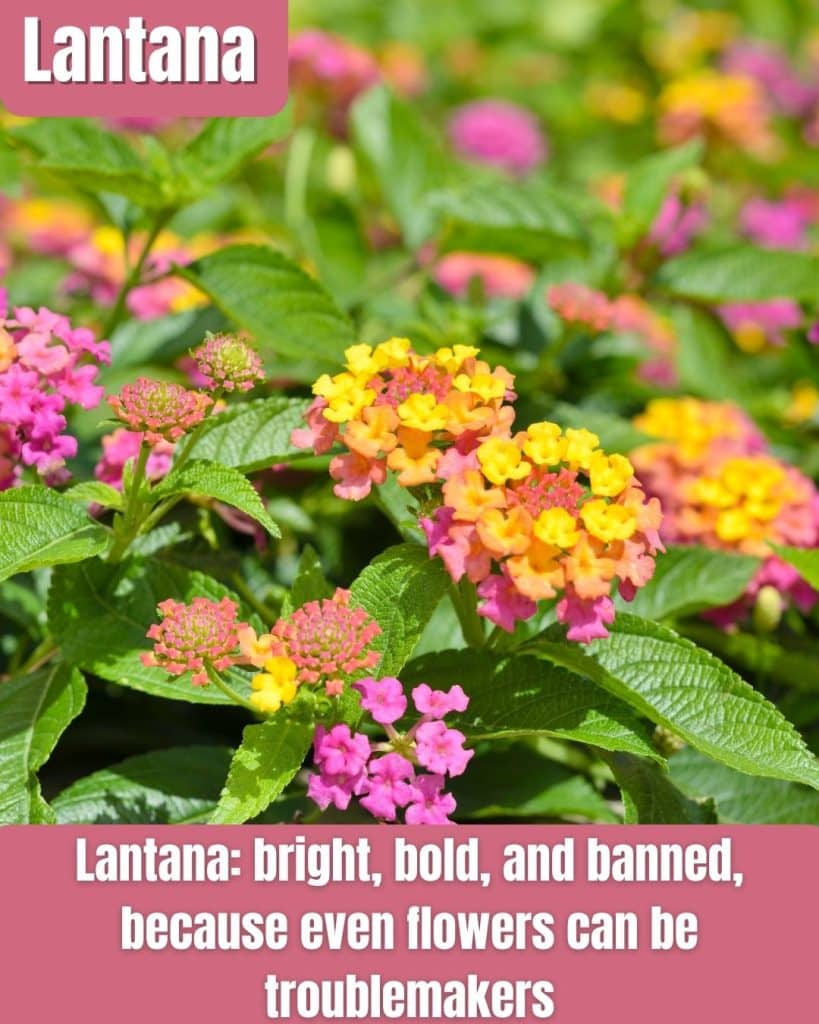
- Native to Central and South America, it was brought over for its colorful blooms.
- Forms dense thickets that smother native plants and take over pastures and wildlands.
- Toxic to pets and livestock, especially the leaves and unripe berries.
Lantana might look like a cheerful addition to your flowerbed, but it’s a garden bully in disguise. It spreads aggressively, pushing out local flora and messing with natural habitats.
And while butterflies love it, grazing animals definitely shouldn’t… This plant is poisonous.
Several states have banned it, and many more are trying to keep it in check. It’s pretty, but problematic.
6. Bamboo
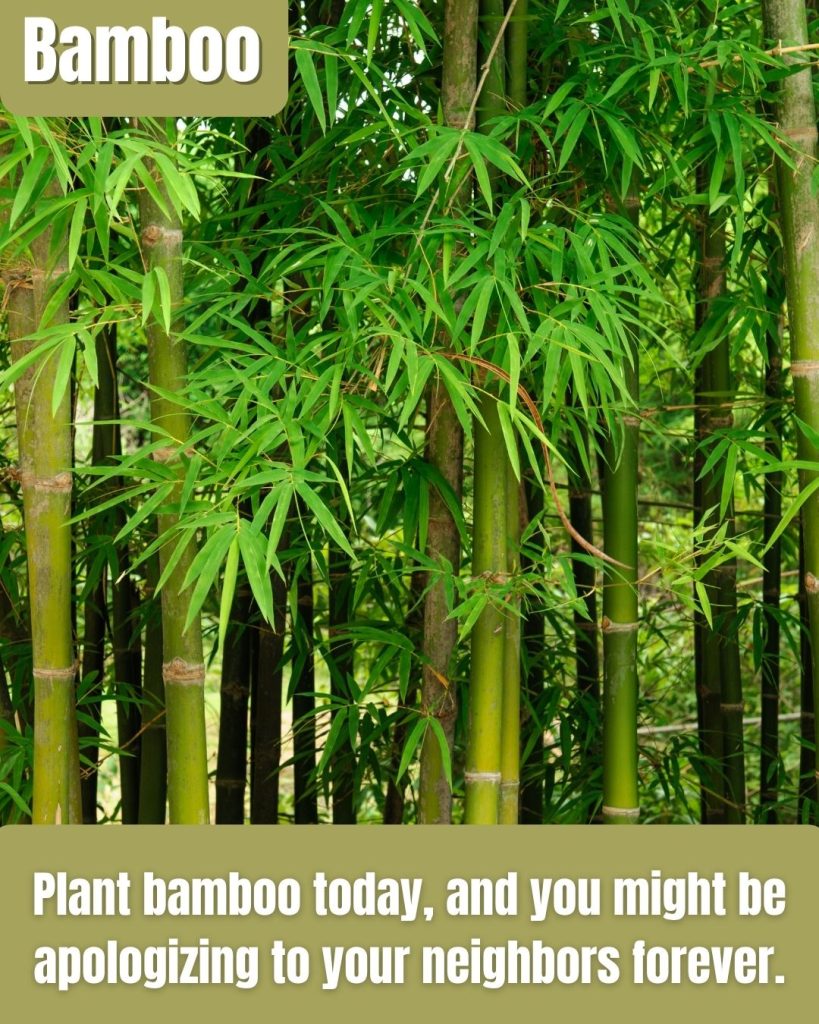
- Imported from Asia for ornamental use and privacy screens, but some types don’t know when to stop.
- Spreads underground through rhizomes that can travel 20 feet or more, popping up in neighbors’ yards and sidewalks.
- Can damage foundations, fences, and pipes, making it a legal headache in many neighborhoods.
Bamboo might seem like a peaceful, Zen-like addition to your landscape, but the running varieties can turn your yard into a jungle fast. Once it takes hold, good luck getting rid of it without a backhoe.
Some states and HOAs restrict or ban certain types for a reason: this grass grows with a vengeance.
7. Purple Loosestrife
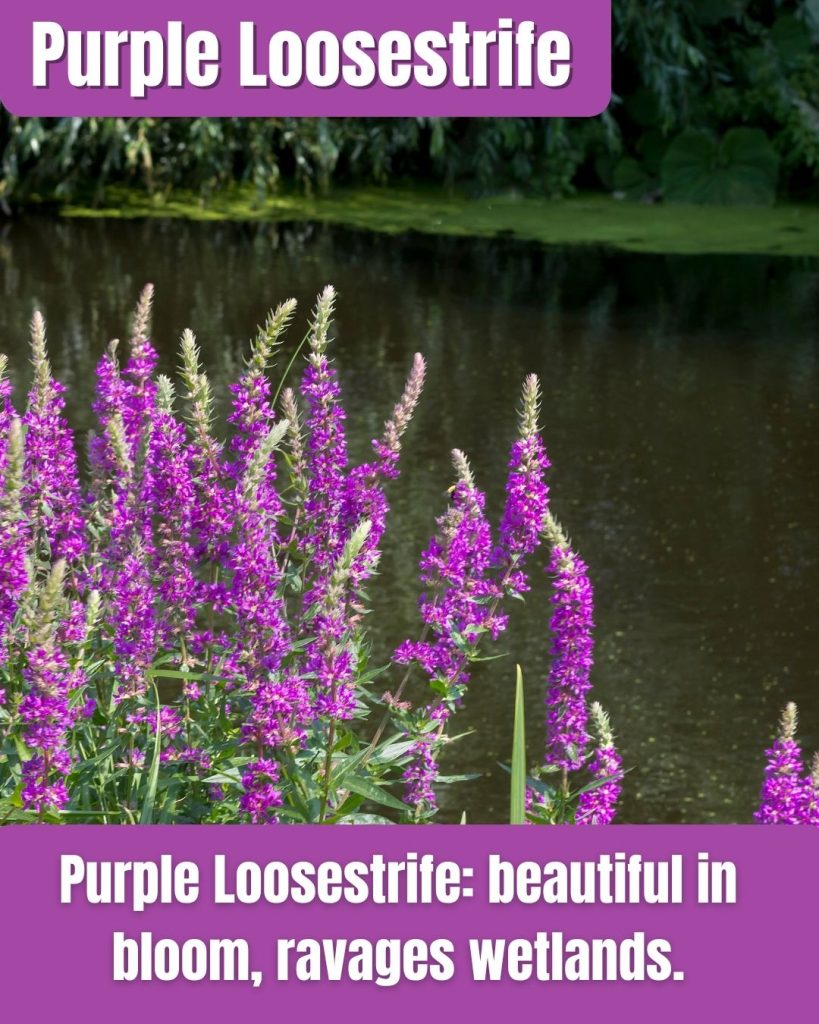
- Originally from Europe and Asia, it arrived in the U.S. in the 1800s through ship ballast and garden catalogs.
- Takes over wetlands fast, forming dense stands that choke out native plants and reduce biodiversity.
- It can spread by seed or root fragments, making it incredibly tough to remove once established.
With its tall purple spikes, purple loosestrife looks like a dream, but it’s a nightmare for wetlands.
It clogs up marshes, crowds out wildlife-friendly plants, and throws entire ecosystems out of balance.
Many states have outlawed its sale and planting. Stick to native wildflowers if you want to protect local habitats.
8. Oleander
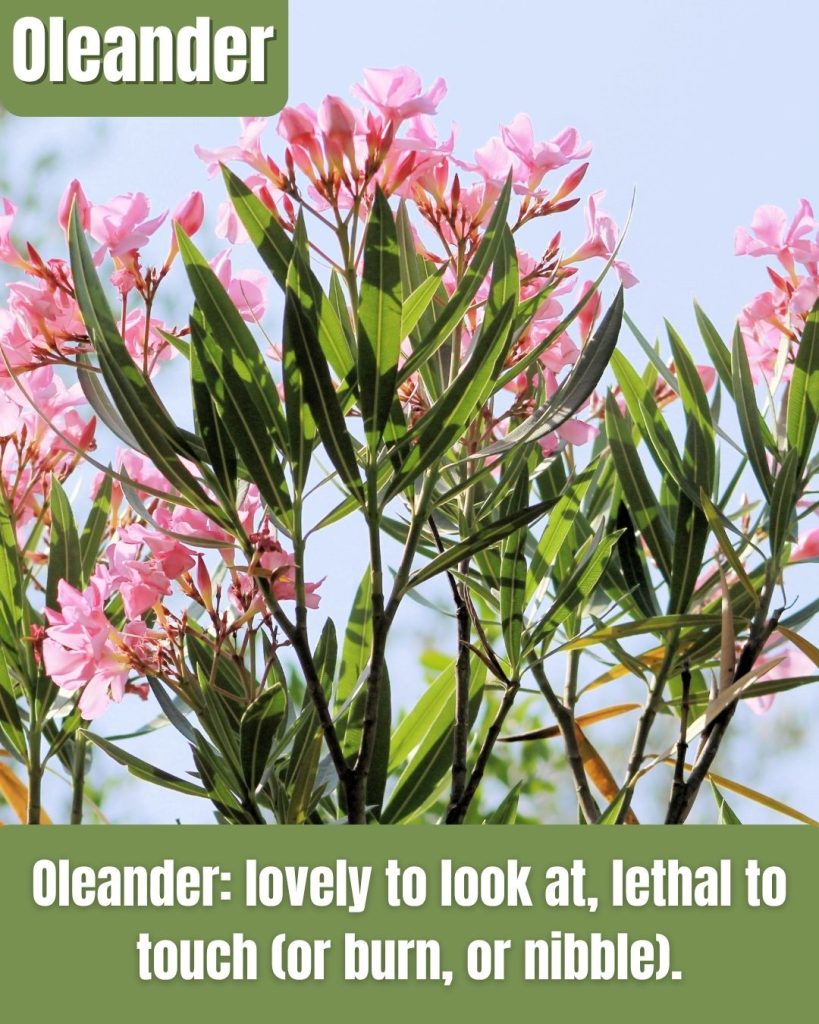
- Native to the Mediterranean, it was prized for its beauty and drought resistance in tough climates.
- All parts of the plant are poisonous, containing cardiac toxins that can be deadly to humans and pets.
- Has a dark history, even showing up in ancient poisonings and modern crime stories.
Oleander is a stunner, no doubt about it. Its fragrant blooms light up gardens in hot, dry places. But behind the beauty lies real danger.
A single leaf can be fatal if ingested, and even the smoke from burning it is toxic.
Some areas restrict it, especially near schools and parks. With so many safer flowering shrubs out there, oleander just isn’t worth the risk.
9. Castor Bean Plant
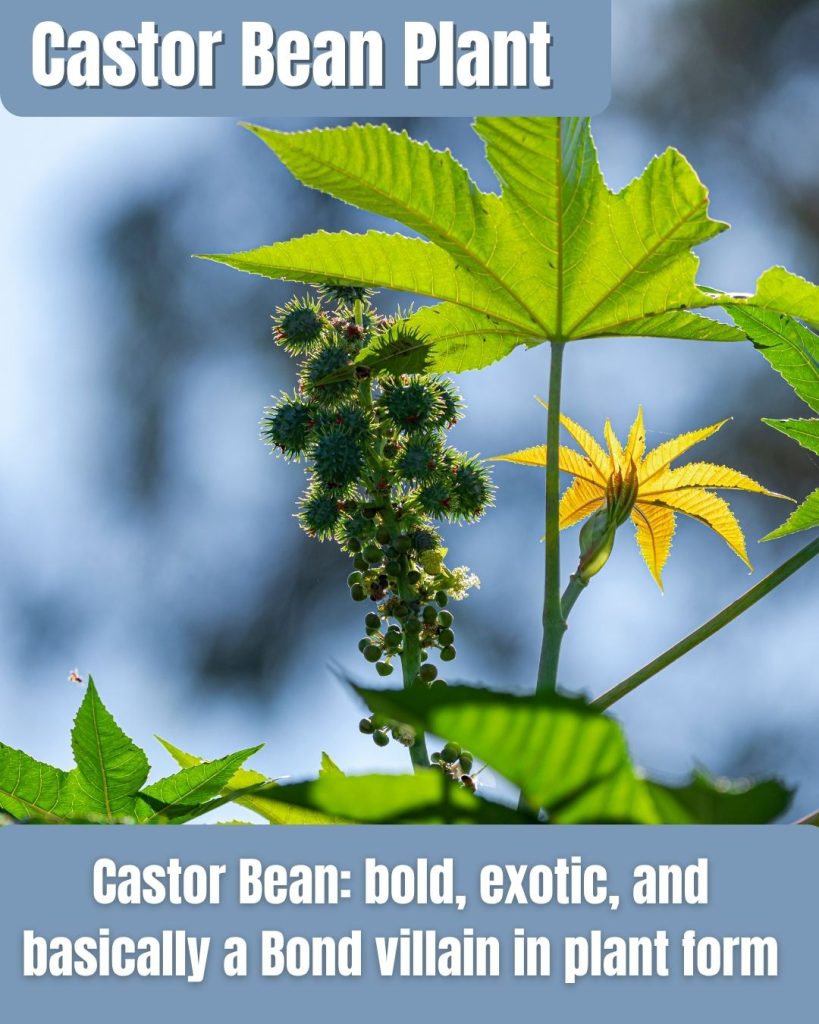
- Native to Africa and India, it’s grown for its bold, tropical leaves and striking red seed pods.
- Seeds contain ricin, one of the deadliest natural toxins known to man. Even a small dose can be fatal.
- Still used industrially for castor oil, but the ornamental version poses serious risks in home gardens.
The castor bean plant brings drama to any yard, but not the kind you want. Its spiky pods are eye-catching, but they hide a deadly secret: ricin.
Just a few chewed seeds can be fatal to kids or pets.
Several areas have clamped down on this beauty-turned-biohazard. If you’re after bold foliage, look elsewhere.
10. Tansy Ragwort
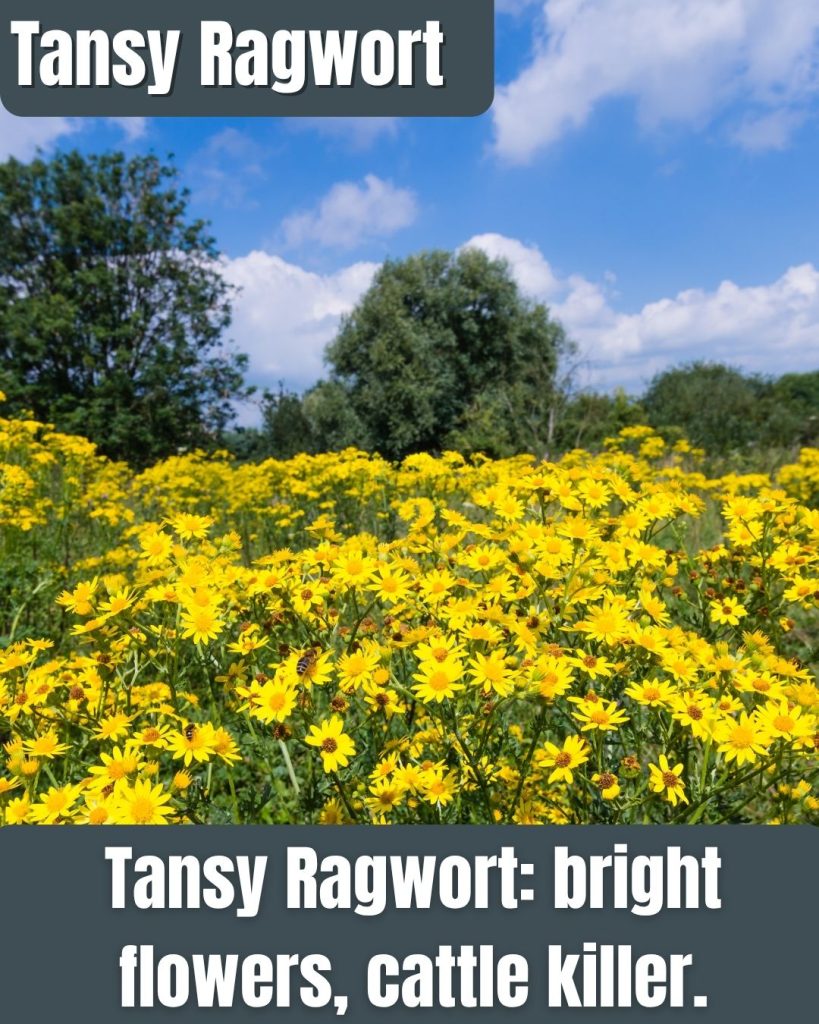
- Native to Europe, it was brought over in the 1800s as a decorative wildflower.
- Loaded with toxic alkaloids, it causes liver failure in grazing animals like horses and cattle.
- Spreads rapidly by wind-blown seeds and can take over pastures and roadsides in no time.
Tansy ragwort may have cheerful yellow blooms, but it’s bad news for farmers and ranchers.
Livestock won’t always avoid it, and even small amounts can build up in their system with deadly results.
That’s why many states have outlawed it. If you spot it, don’t let it linger. Rip it out before it spreads.
11. Belladonna (Deadly Nightshade)
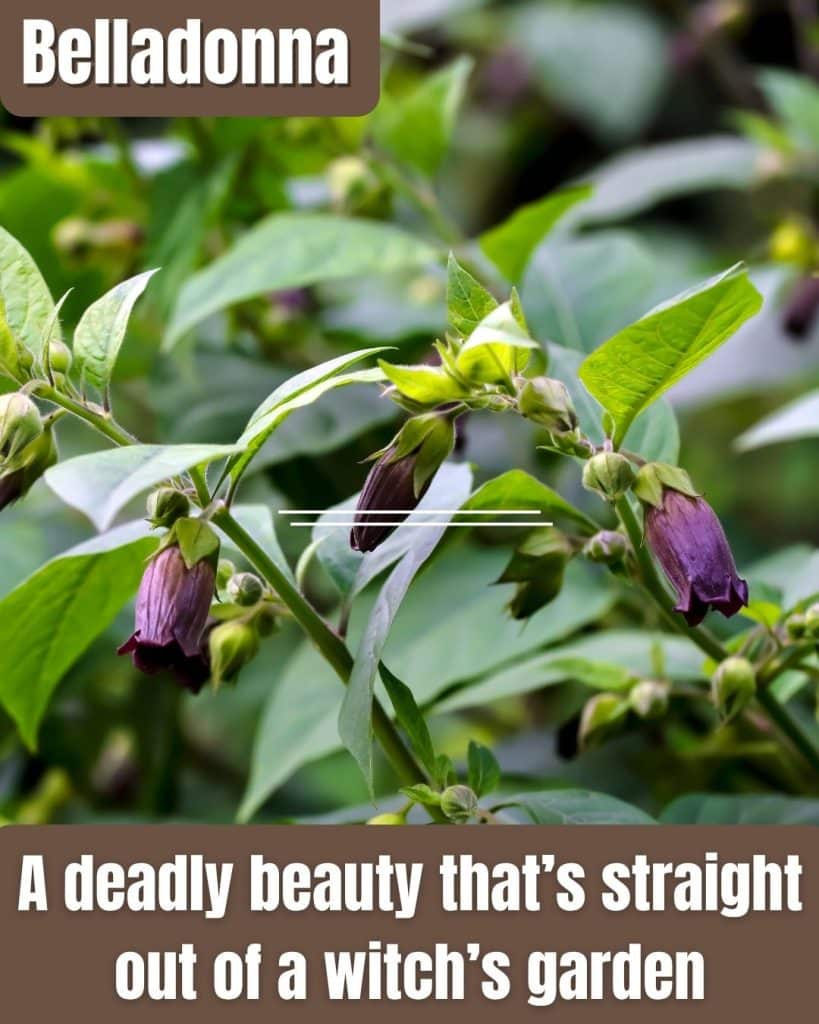
- Native to Europe and North Africa, it’s been used for centuries in potions, poisons, and folklore.
- Contains atropine and scopolamine, powerful toxins that can cause hallucinations, paralysis, or death.
- Its name means “beautiful woman” in Italian, because it was once used to dilate pupils as a beauty trend.
Belladonna is as fascinating as it is dangerous.
Its dark berries and lush foliage hide a toxic punch that has made it famous in both history and horror stories.
Just a few berries can be lethal, especially to children.
Today, it’s banned in many places due to its toxicity. This is one plant where the mystery really isn’t worth the risk.
12. Common Buckthorn
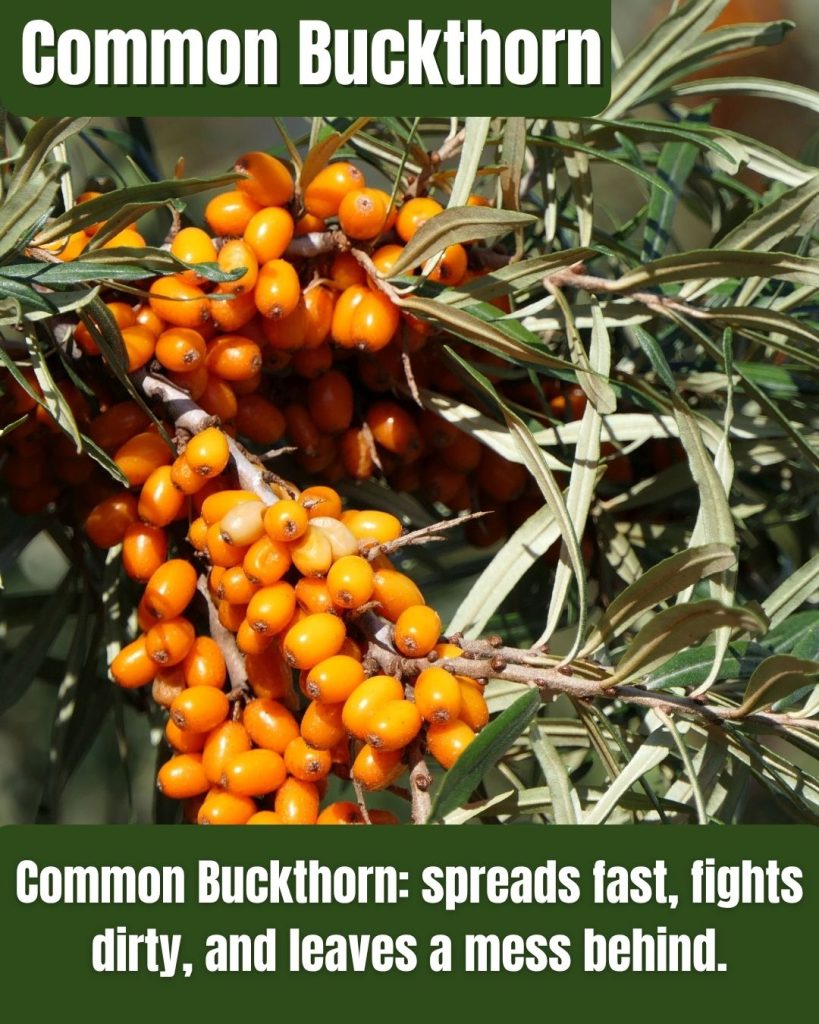
- Brought from Europe in the 1800s as a hedgerow and ornamental shrub.
- Spreads aggressively, forming dense thickets that crowd out native plants and prevent forest regeneration.
- Its berries act as a laxative for birds, helping it spread far and fast, often in places it’s not welcome.
Common buckthorn looks harmless enough, but it’s a quiet invader.
It quickly forms dense walls of greenery that block sunlight and push out native species, throwing natural systems out of whack.
It’s banned in several states, especially in the Midwest. If you need a privacy hedge, pick one that won’t take over your whole yard.
13. English Ivy

- Native to Europe, it was brought to the U.S. for its classic, elegant look on buildings and fences.
- Climbs and smothers everything, from trees to homes, causing structural damage and ecosystem collapse.
- Creates monocultures, crowding out native groundcovers and choking forest floors.
English ivy might look refined climbing up a stone wall, but don’t let its charm fool you.
Outdoors, it becomes a sprawling menace, toppling trees, harboring pests, and even damaging buildings with its clinging roots.
It’s restricted in several states, especially in areas with sensitive woodlands.
If you want that ivy-covered look, try native alternatives that won’t take over your property.
14. Hydrilla
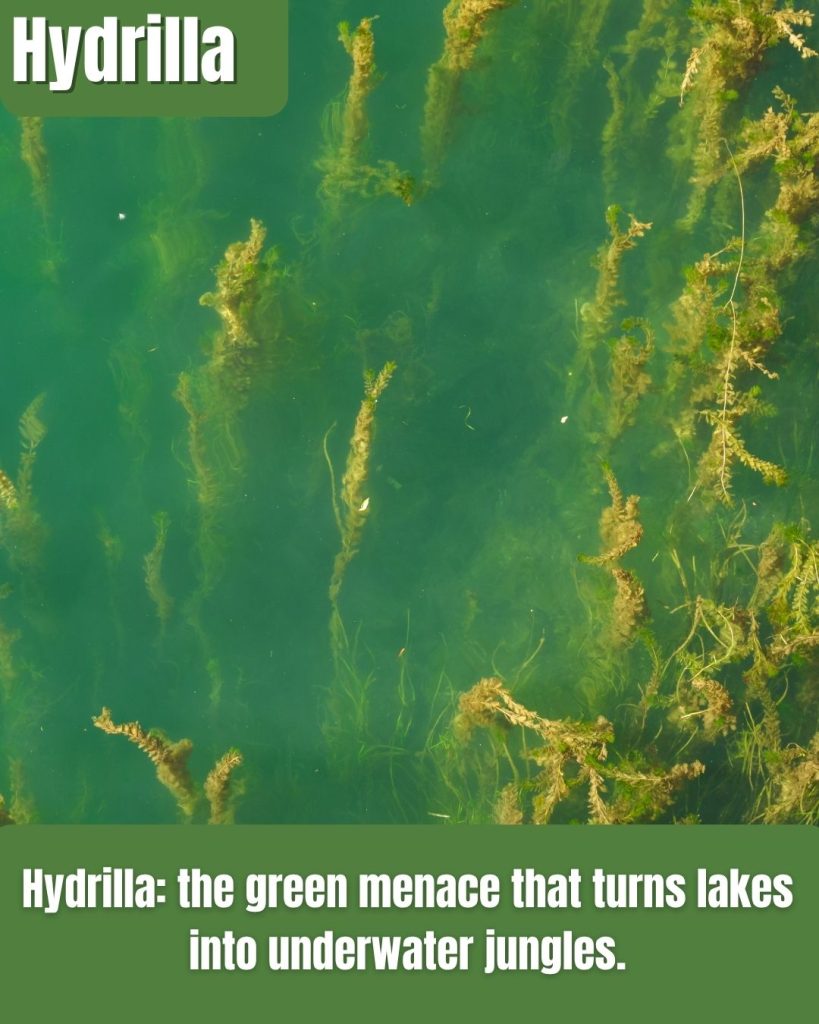
- Native to Asia, it was introduced to the U.S. through the aquarium trade in the 1950s.
- Forms thick underwater mats that block sunlight, slow water flow, and choke out native aquatic life.
- Can regrow from fragments, making it nearly impossible to eradicate once it takes hold.
Hydrilla might look harmless floating in a pond, but it’s a full-blown underwater invader. It grows fast, clogs waterways, and wrecks ecosystems from the bottom up.
Even boats and fishing gear can accidentally spread it to new lakes.
Many states have banned its sale and transport. This is one aquatic plant that turns peaceful ponds into tangled nightmares.
15. Poison Hemlock
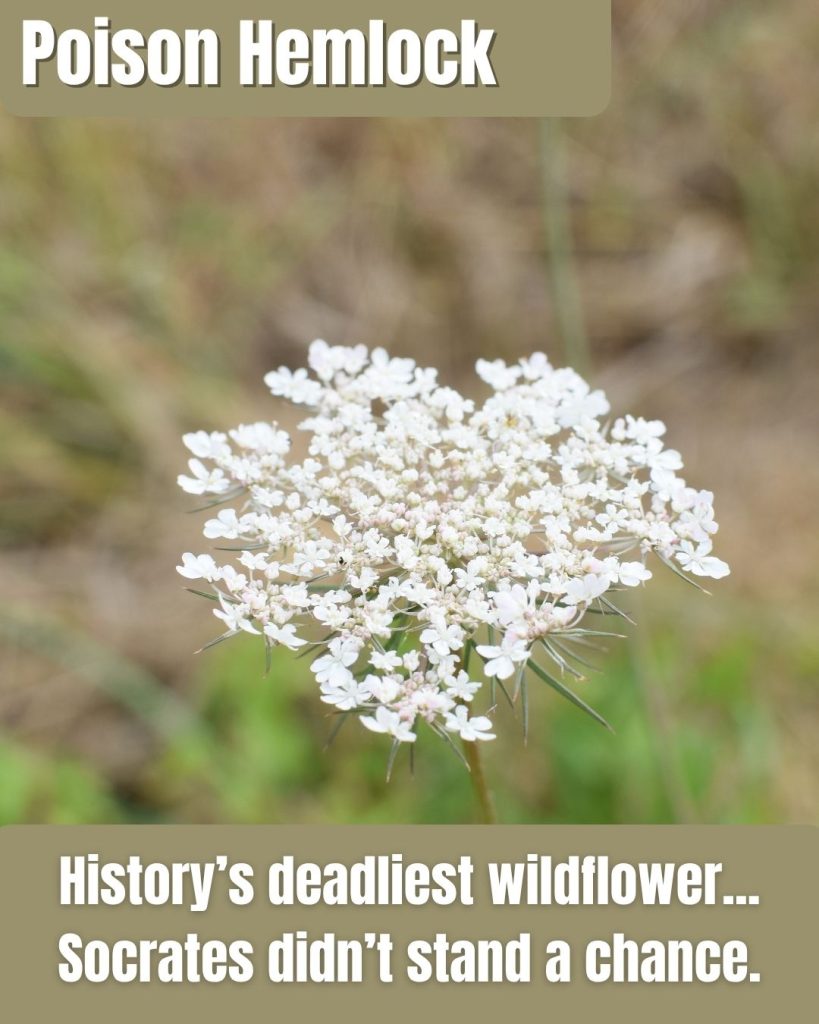
- Native to Europe and North Africa, it was brought to the U.S. as an ornamental and for supposed medicinal use.
- Contains toxic alkaloids, and even small amounts can cause respiratory failure if ingested.
- Famously used to execute Socrates, giving it a sinister place in history.
Poison hemlock looks innocent enough with its delicate white flowers and fern-like leaves, but it’s one of the most toxic plants in North America.
All parts are poisonous, and even skin contact can be risky during removal.
It’s now banned or restricted in many states due to the danger it poses to both people and animals.
16. Poison Ivy
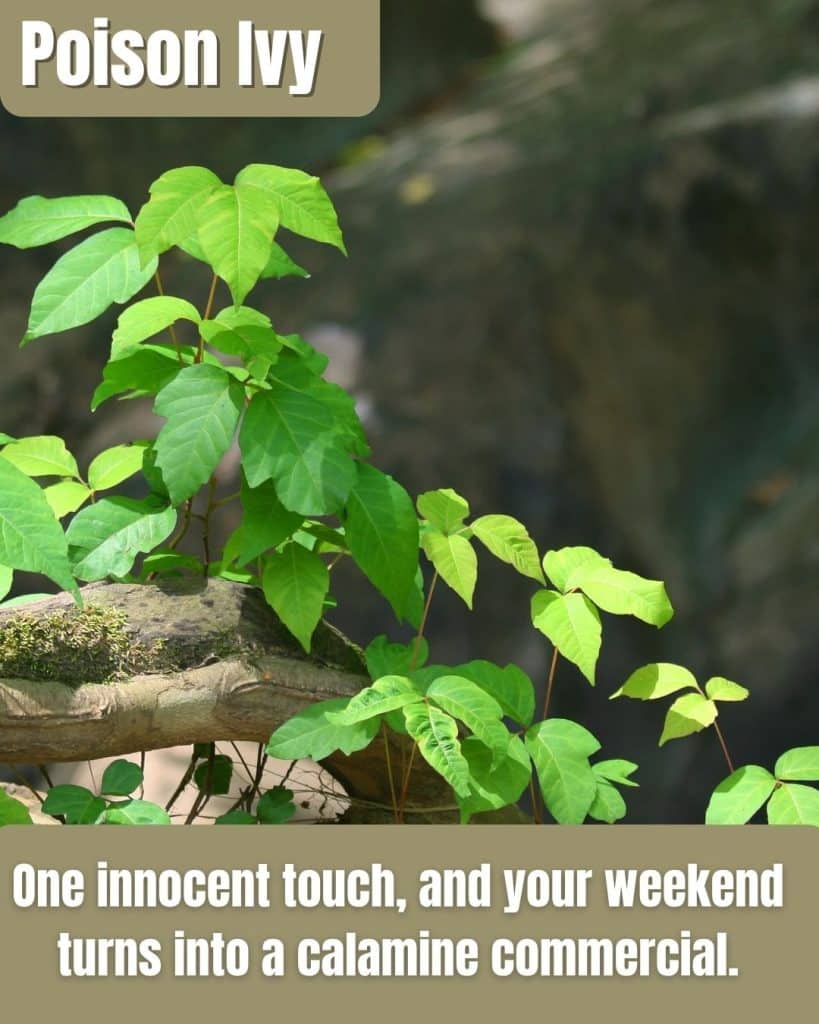
- Native to North America, it’s been causing itchy regrets for centuries.
- Contains urushiol oil, which triggers allergic reactions in up to 85% of people.
- Can grow as a groundcover, vine, or shrub, making it sneaky and hard to spot.
“Leaves of three, let it be” isn’t just a rhyme, it’s solid survival advice. Poison ivy may look unassuming, but brushing against it can lead to days of rashes and misery.
The oil can linger on clothes, pets, and tools, spreading the misery further.
In some regions, cultivating it on purpose is actually illegal. Best to keep your yard itch-free.
18. Wisteria (Chinese & Japanese Varieties)
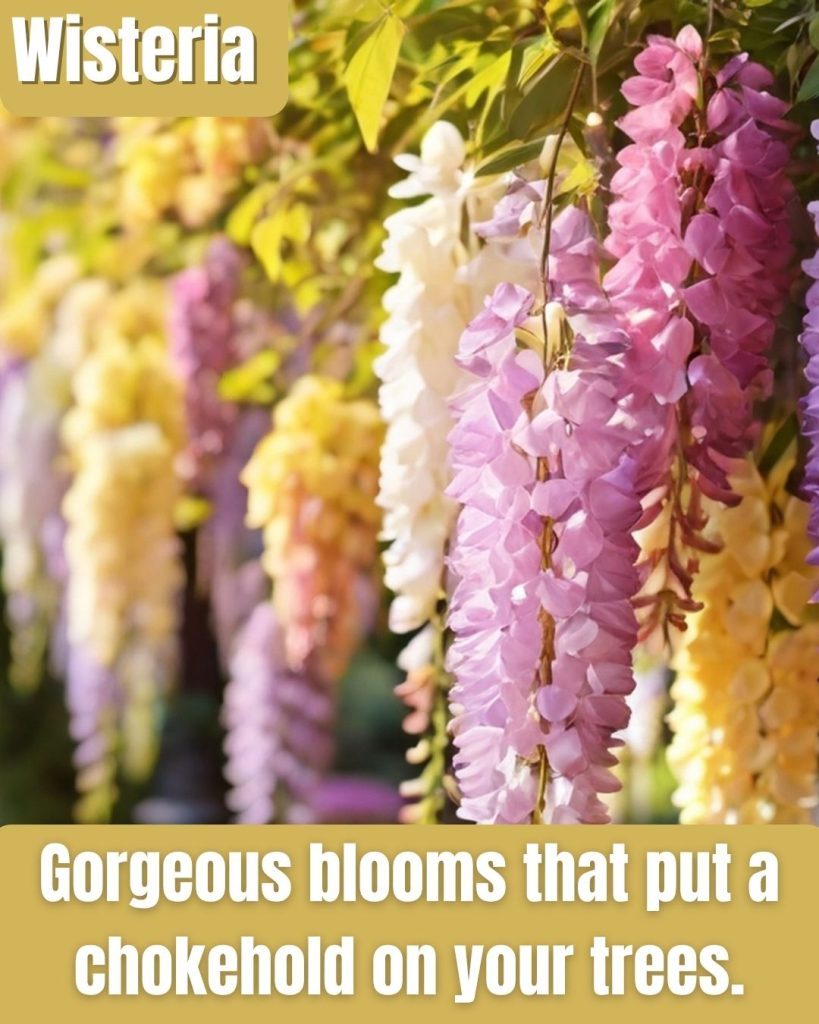
- Imported from Asia in the 1800s, these vines were prized for their cascading purple flowers and dreamy garden appeal.
- Wraps tightly around trees and structures, often strangling them or causing serious damage.
- Spreads by seeds and runners, quickly escaping gardens and overrunning forests and fences.
Chinese and Japanese wisteria are beautiful, but dangerously aggressive.
Once planted, they’re nearly impossible to fully remove, growing heavy enough to collapse porches and fences. They’ve invaded woodlands in parts of the South, outcompeting native vines and saplings.
If you love the look, opt for American wisteria. It’s just as lovely, but plays a lot nicer with the local ecosystem.
19. Pampas Grass
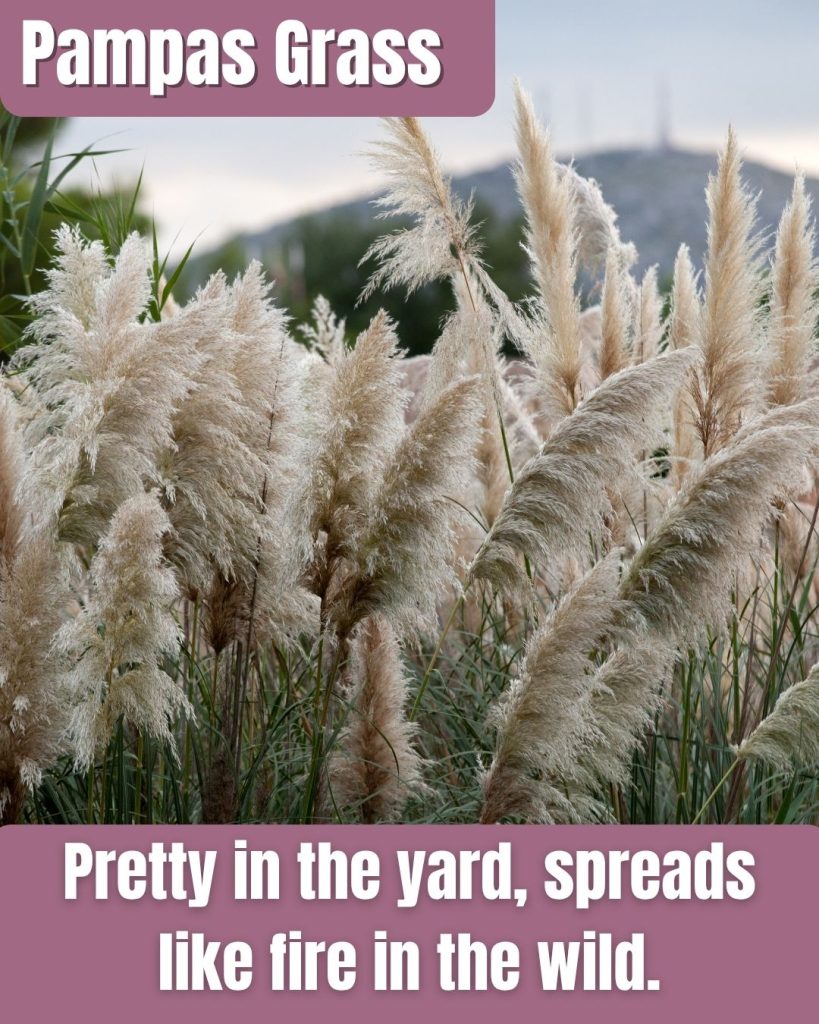
- Native to South America, it was imported for landscaping thanks to its tall, fluffy plumes.
- Spreads rapidly by wind-blown seeds, often invading prairies, dunes, and roadside areas.
- Becomes a fire hazard, with its dense, dry foliage feeding wildfires in dry regions.
Pampas grass might look elegant swaying in the breeze, but don’t let the glam fool you. Once established, it’s nearly impossible to remove and spreads aggressively across open land.
It also forms dense clumps that crowd out native plants.
Some states have restricted or banned its use entirely. If you want showy grasses, there are native varieties that won’t cause a four-alarm fire.
20. Salvinia Molesta (Giant Salvinia)
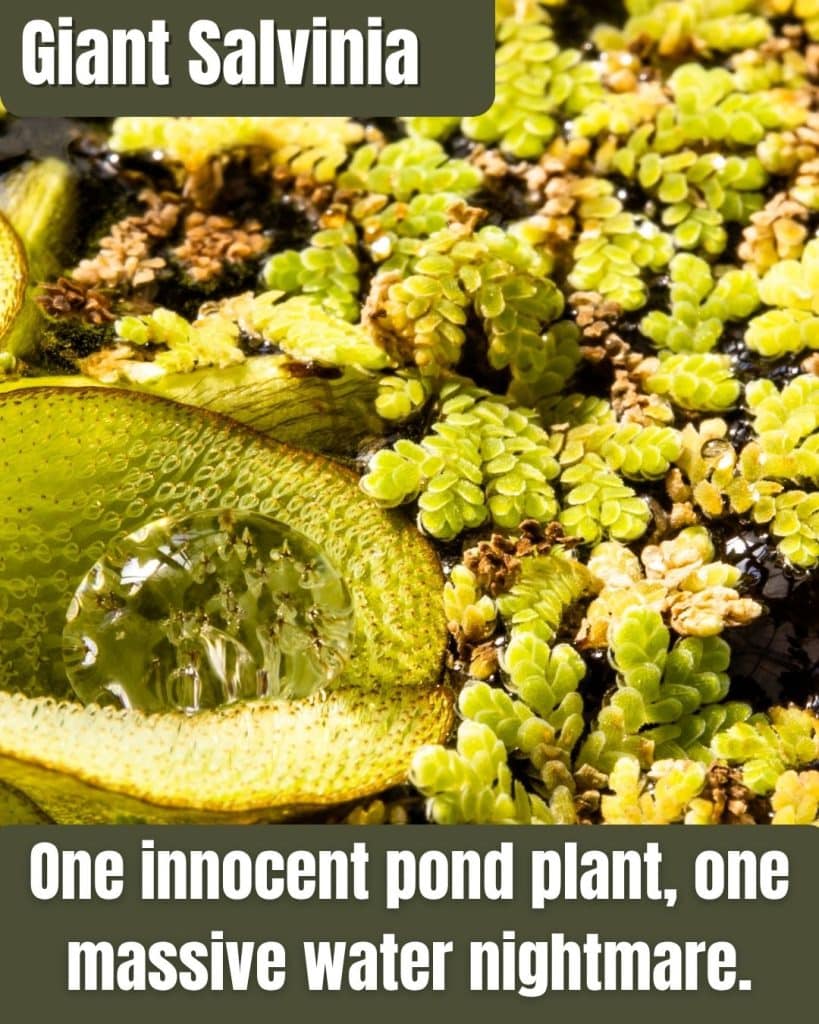
- Native to South America, it was introduced as an ornamental plant for backyard ponds and aquariums.
- Forms thick mats on water surfaces, blocking sunlight and suffocating aquatic life below.
- Can double in size every few days, even from a tiny fragment, making it a nightmare to control.
Giant Salvinia looks innocent enough floating on the surface of a pond, but it multiplies like crazy.
In no time, it can turn a clear lake into a green swamp, choking fish, clogging boat motors, and ruining entire ecosystems.
It’s illegal in many states, and for good reason. When it comes to aquatic plants, this one’s a floating disaster.
21. Scotch Broom (Banned in many states)
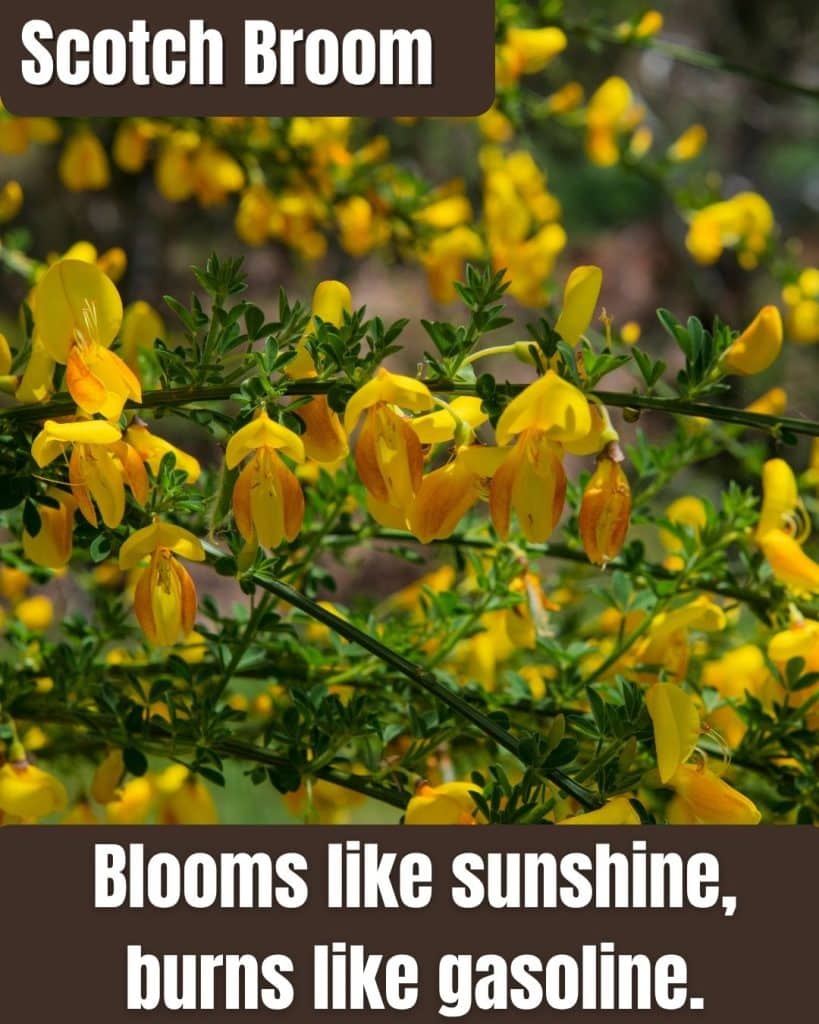
- Originally from Europe, it was brought over for erosion control and ornamental planting.
- Spreads rapidly in disturbed soil, forming dense thickets that outcompete native species.
- Highly flammable, increasing wildfire risks in dry regions like the Pacific Northwest.
Scotch Broom might catch your eye with its bright yellow flowers, but don’t be fooled… It’s an aggressive invader.
It takes over hillsides, roadsides, and pastures, crowding out wildlife-friendly plants and fueling fire seasons with its oily stems.
Many Western States have declared war on this flashy menace. If you see it sprouting up, yank it before it spreads.
22. Mexican Petunia

- Native to Mexico and the Caribbean, it was introduced for its vibrant purple blooms and toughness.
- Spreads aggressively through seeds and underground rhizomes, forming dense monocultures.
- Outcompetes native plants, especially in warm, wet climates like Florida and Texas.
The Mexican petunia is a survivor. It’ll grow in drought, floods, and just about anything in between.
But that resilience comes at a cost: it pushes out native wildflowers and grasses, disrupting the natural balance.
Several southern states have cracked down on it. If you love the look, try a sterile cultivar or native wild petunia instead.
23. Water Hyacinth
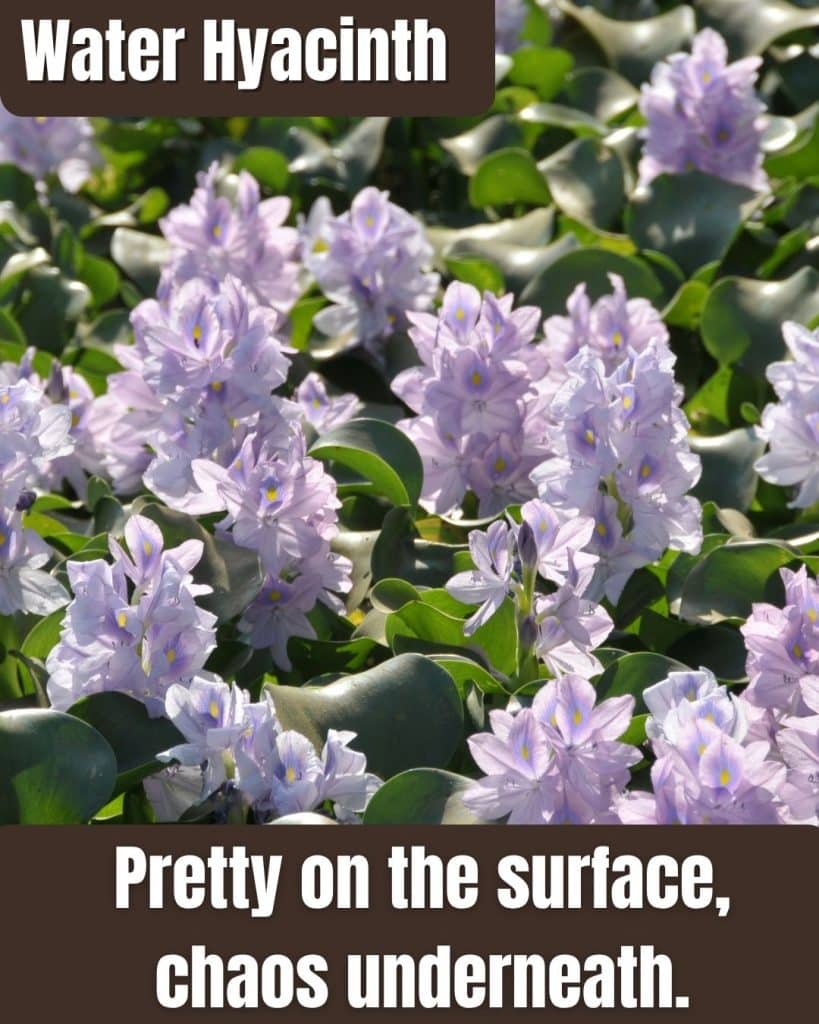
- Native to South America, it was introduced in the 1800s for ornamental ponds and aquatic gardens.
- Doubles in population every 2–3 weeks, forming thick mats that block sunlight and deplete oxygen.
- Clogs waterways, disrupts native species, and causes major problems for boating and fishing.
Water hyacinth looks lovely with its lavender blooms and floating green leaves, but it’s one of the world’s worst aquatic invaders.
It spreads fast, suffocates wildlife, and transforms ponds into stagnant swamps.
Many states have banned it to protect local waterways. If you’ve got a water feature, stick with native plants that know how to share the space.
24. Giant Reed
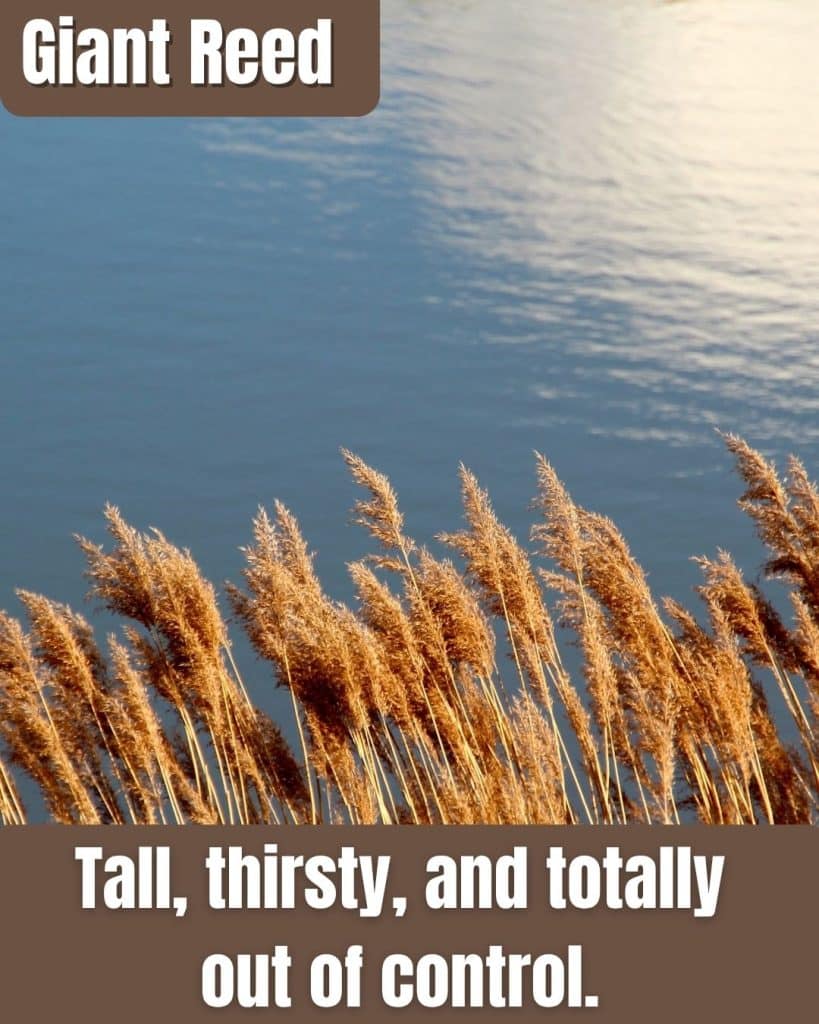
- Native to the Mediterranean and Middle East, it was brought to the U.S. for erosion control and musical instrument reeds.
- Grows up to 20 feet tall, forming dense thickets along rivers and roadsides.
- Consumes huge amounts of water and crowds out native riparian plants, disrupting entire ecosystems.
Giant reed is like bamboo on steroids. It grows fast, drinks a ton of water, and forms thick walls that push out everything else.
It also increases fire risk in dry areas and is notoriously tough to remove once it gets established.
Many southwestern states have moved to ban or control it near waterways. It’s bold, but it’s bad news.
Thanks for Reading!
Who knew your backyard could be harboring outlaws? From charming climbers to sneaky spreaders, these plants prove that not everything green is good.
Before you dig in and plant something pretty, double-check those local regulations. Your dream garden shouldn’t come with a fine (or a hazmat suit).